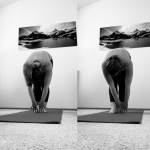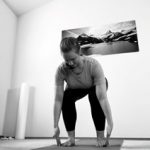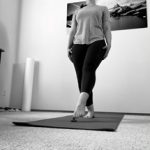At Risk for Injury? Find Out Now
Despite popular belief, injuries do not usually just happen to us. Of course, there are exceptions, such as being rear-ended in a car accident, but the majority of the time, people that end up seeking medical care due to injury had at least one risk factor that preceded their injury that was left untreated. When I assess a patient in physical therapy (PT) I am not only evaluating and treating an injured body part, but also getting a sense of overall body function to determine areas of weakness and vulnerability that need a bit more attention and care. It follows that my goal during PT treatment is not only to restore function of an injured body part, but also to reduce the person’s overall injury risk. I enjoy helping people get and stay well by teaching them how to improve independent management of their chronic conditions.
Performing the following 5 movements can help you determine whether your body has adequate range of motion, strength, and coordination to reduce your risk of injury.
Even resolving one risk factor or limitation can significantly reduce your overall injury risk. Keep in mind, none of these activities should be painful, so if you notice pain as you attempt a movement, back off and follow up with your primary care provider. Each movement has a beginner, phase 1 form. Inability to perform phase 1 is usually coupled by restrictions to everyday activities of daily living. The more advanced phase 2 version would indicate full, normal mobility that is required for people who are more active or involved in sports. Only try phase 2 if you can do phase 1 without pain. Remember, this is not the end-all-be-all for absolute injury risk, but rather a simple screening tool that you can try from the comfort of your own home.
Take a few moments to stand up and give these moves a try! Make sure you are set up in a safe space with a sturdy object nearby so that you can recover your balance if you need to.
- Standing forward bend “toe touch”: Standing with feet together you should be able to bend forward and touch your toes. If you experience pain or are unable to touch your toes you may have limited back range of motion, hamstring flexibility, or perhaps a history of back pain that makes you apprehensive about this type of spinal movement. If you can touch your toes easily, stagger your feet (one forward, one back) and then bend forward again. Being able to touch your front toe without pain is a “pass” grade for phase 1. Being able to touch the back toe indicates normal ability for phase 2. Make sure to check both sides and notice asymmetries.
- Deep squat: Squatting is so important for daily activities including navigating stairs, lifting and carrying objects, and doing household chores. Remember to shift your weight into your heels as you sit back. Standing with legs hip width apart, do a squat allowing your arms to hang down toward the floor near your feet. If you are able to touch your finger tips on the outsides of your feet, great job with phase 1! For phase 2, try making fists and then reaching your knuckles to the ground alongside your feet. If this one is challenging for you, you may have limited strength or range of motion in your lower body, specifically of your back, hips, knees, or ankles.
- Trunk rotation: Warning: this one may challenge your balance! Stand with feet together, clasp hands in front of your chest with fingers pointing straight forward, then rotate your body to the side. You should be able to rotate about 90 degrees (fingers point directly sideways relative to your feet) while maintaining balance. Both directions should be more or less symmetrical. If you can do this without pain or restriction, try phase 2 by staggering your stance (one foot forward, one foot back) and rotating toward your front leg, again aiming for 90 degrees of rotation on both sides for full function.
- Shoulder mobility: Can you pass a piece of paper from one hand to the other behind your back? One hand reaches up and over the same shoulder, and the other hand reaches up the back to catch the paper. If this hurts or you are unable to perform this movement, you may have restriction in your shoulder, arm, or thoracic (mid-back) region. If passing the paper was a breeze, try phase 2 by reaching and attempting to touch hands together behind your back. Remember to try both arms and see if you can notice where you sense tension, weakness, or restriction.
- Balance with toe tap: This one will also challenge your balance. Place a small object one foot length away from you. Stand on one leg and reach the other leg to tap the object with your toe. If you are unable to do that one time due to imbalance, you have an increased risk of falls and require balance training by a skilled PT to reduce your fall risk. If you passed that safety screening, move the object 2 foot-lengths away. If you are able to do 5 successive taps on each leg, great job- you’ve passed phase 1. Ready for phase 2? Take another half step back and try to tap the object 5 times again with each leg. If you can do that, your balance and coordination (and lower body strength and mobility) are all working well.
Mary Breckel is a physical therapist at Jefferson Healthcare who has a special interest in chronic conditions including persistent pain, osteoporosis, and functional decline that occurs in the presence of aging. The previous article presents a series of 5 simple movements you can try at home to determine your current injury risk and potential need for physical therapy services.
June 2021










